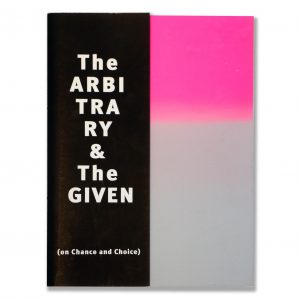Jack and Betty Forever
Jack and Betty Forever
Date
2005
Edition Size
35
Media
Letterpress
Binding
Accordion
Format
Artist Book
Dimensions
6.5 × 7.5 in
Collection
Limited Edition Artists Books$ 900.00
Unavailable
View Collectors
Athenaeum Music & Arts Library, La Jolla
Boston Athenaeum
Harvard University, Fine Arts Library
Library of Congress (LoC)
Multnomah County Public Library
Newberry Library
Oberlin College
Savannah College of Art & Design (SCAD)
Scripps College, Denison Library
Swarthmore College
Temple University
The New York Public Library (NYPL)
The University of Chicago Library
The University of the Witwatersrand, Wits Art Museum (WAM), Jack Ginsberg Centre for Book Arts
University of California, Los Angeles (UCLA)
University of California, San Diego (UCSD)
University of California, Santa Barbara (UCSB)
University of Miami
University of Minnesota
University of North Carolina (UNC), Greensboro
University of Vermont
Wesleyan University, Olin Library
Williams College, Chapin Library of Rare Books
Jack & Betty— in the fifties and sixties a whole generation of Japanese students studied English by using this textbook. The big influence this book had on most of these students is still visible in the society. Almost everyone who studied with this book can remember it very well and may even be able to repeat the first sentence— for most of them the first contact with a foreign language at all: “This is a pen.”
Forty years after this book ceased to be used in school, there are still some hints at its influence, e.g. a whole chain of pachinko parlors or love hotels, as well as pets, have been named after the two protagonists.
In his short story Jack & Betty forever, the Japanese author Yoshinori Shimizu describes what has happened to the two protagonists thirty years after they graduated from school. He lets meet them by accident in the street where they tell each other their story as well as the story of their families who also play a role in the textbook.
Neither had much success in their life, but what makes Shimizu’s story sound so weird and tragic is the fact that both of them continue to talk to each other in the same strange style they used in their textbook dialogues. They excuse this by saying they were models for an English language textbook for Japanese and “because of that, at our school we deliberately started speaking English in a way that was easier for Japanese people to understand.”
They are sitting in a café not being able to talk at a language level appropriate to their age and experiences. From time to time they relapse into the dialogues of their schooldays and feel only comfortable with conversations like: “Is that a sofa?” “No, that is not a sofa. That is chair.”
His speech being reverted to patterns of thirty years ago, Jack is not able to confess that he was in love with Betty during their three years at junior high school and still is attracted by her beauty.
For this book, I collected Japanese notebooks with different lines and grids. Checkered and vertical lined ones for the Japanese characters, horizontal lined ones for the alphabet.
The text was originally published in Japanese in 1991 by Kodansha. I printed the Japanese version on paper with western lines and the English version on paper for Japanese characters.
As the English and Japanese ways of reading differ (English: left-right, Japanese: right-left) the book has two beginnings: the English text starts in ”front“, the Japanese in the ”back“. Both of them meet in the middle with the imprint.
Each page is illustrated with a pattern of roses. For this, I took the rose Betty in lesson 7 is holding in her hand and showing it to Jack saying: “This is a flower.”
The cover of the book is made from light blue cardboard, corresponding to the blue color of the lines, and printed with a rose pattern.
The book comes with a small booklet containing a CD on which I burned parts from singles Columbia Records has published in the fifties and which are recorded with lessons from the textbook.
This gives the reader who does not know the original textbook an impression of the dialogues that from a nowadays perspective, seem to be very stiff.
Both CD and book are kept in a box pasted with the different covers from the notebooks I used. There are covers with Japanese comic characters as well as English quotations that reflect the aesthetics fifty years after the textbook Jack & Betty was first introduced to Japan.
— Veronika Schäpers
Jack and Betty forever by Shimizu Yoshinori
Letterpress-print by zinc-clichés in English and Japanese, linocut on notebook paper with different lines and grids.
Cover made by GA-File. CD in a booklet with old recordings from the textbook “Revised Jack and Betty”. Box pasted with different covers from store-bought Japanese notebooks. 16,5 x 19 cm. In an edition of 35 Arabic numbered copies. 2005.







